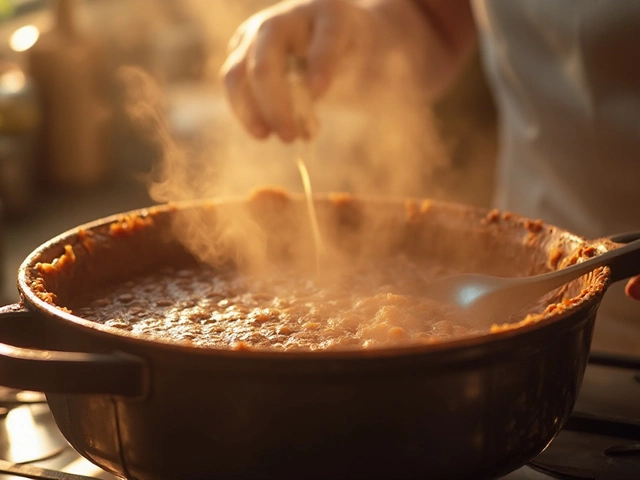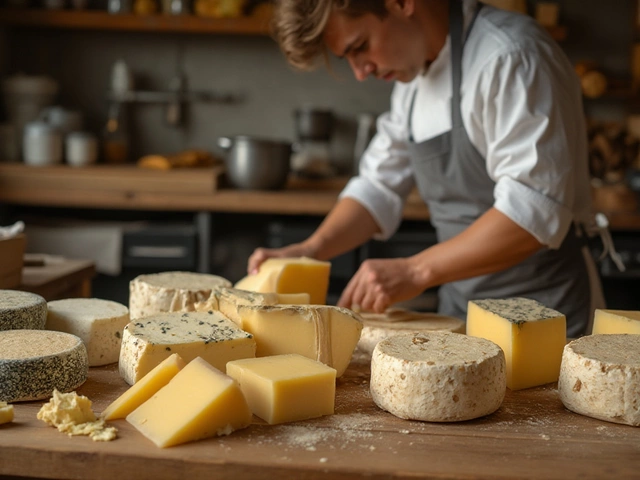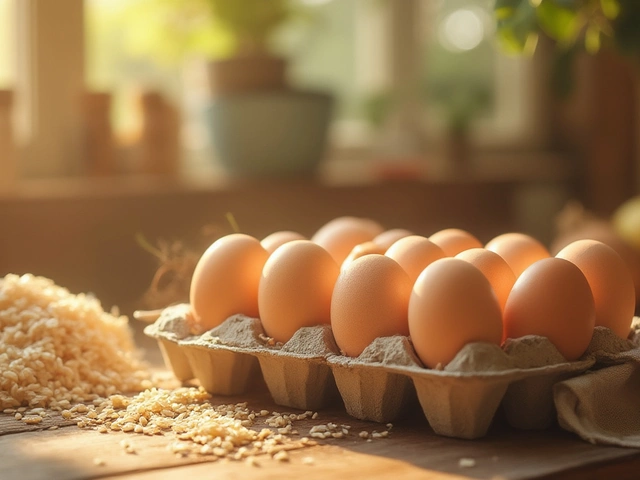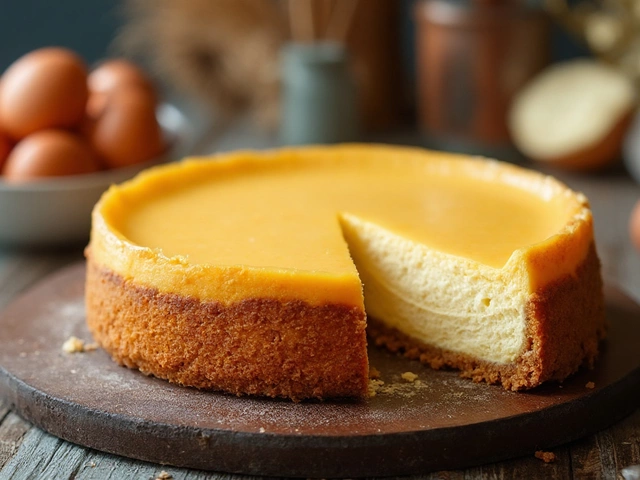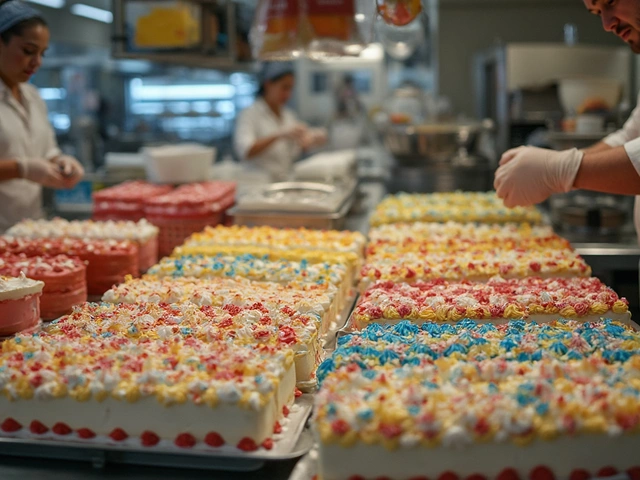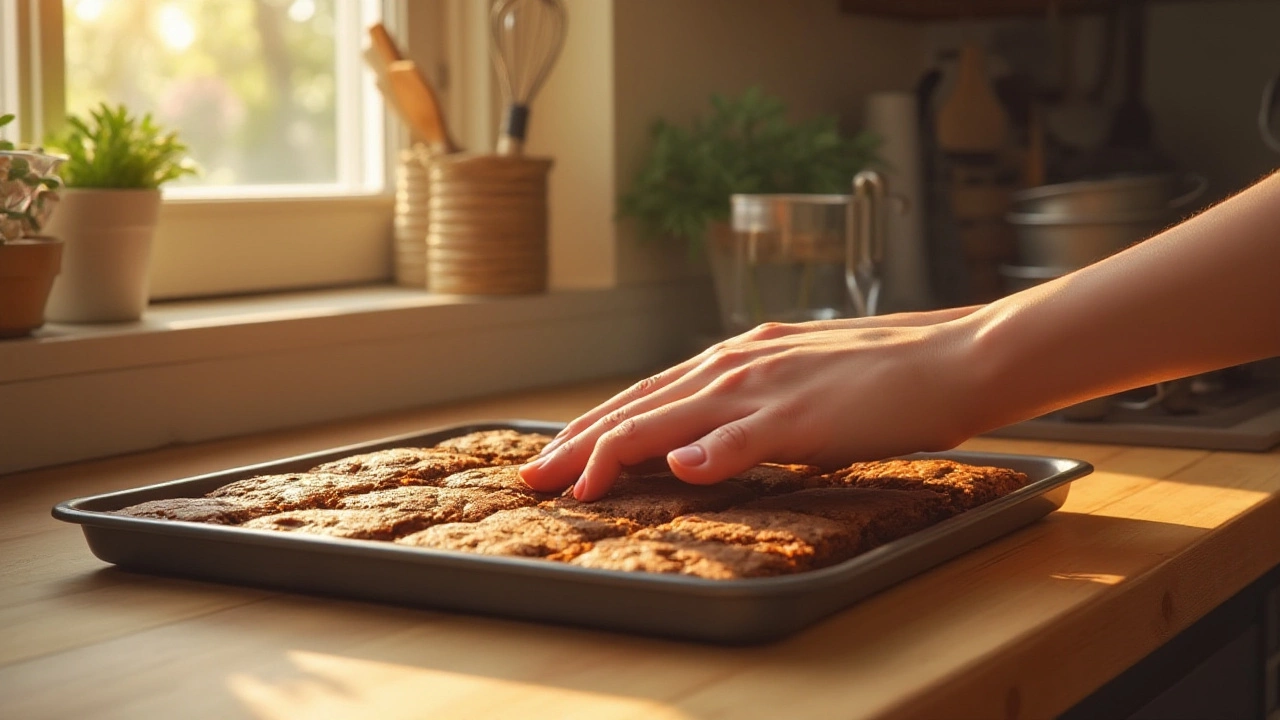
Brownie baking can be both an art and a science, an adventure of textures and flavors. For anyone who's found themselves toothpick-less in the middle of a baking session—or simply wanting to try something different—there are plenty of alternative methods to determine brownie doneness.
Forget poking around with a toothpick; we'll explore the subtle cues that signal a perfectly baked brownie, from slight jiggles to tempting aromas. These insights are bound to change how you approach your next batch, ensuring they're just the right amount of gooey or firm, according to your taste. Dive into this guide to achieving brownie bliss with confidence and creativity.
- Visual Cues
- Tactile Techniques
- The Jiggle Test
- Using Your Senses
- Thermometer Checks
- Master Baker Tips
Visual Cues
When it comes to baking the perfect batch of brownies, our eyes often become our greatest allies. Instead of relying on a toothpick, observing the surface of the batter closely as it bakes can provide vital clues to its doneness. As brownies bake, a subtle yet noticeable transformation occurs. The glossy sheen that initially characterizes the raw batter gradually begins to fade. Instead, you'll notice a slight dullness emerging on top, indicating that the moisture is receding and the batter is setting. This is one of the primary visual cues that your brownies are inching towards perfection.
Another significant indicator is the way the edges of the brownie pull away from the sides of the pan. As the batter heats and solidifies, the sides will begin to contract lightly, creating a small gap between the brownie and the edge of the pan. This is a classic sign of readiness and something to look for regardless of the type of pan you're using. Pair this with a light browning at the edges, which often hints at a well-done boundary, ensuring a delightful texture contrast between the chewy center and the crispier edges.
Changes in color are crucial visual cues. You'll notice the batter darkening, which is a sign of caramelization—a delicious transformation in flavor as sugar molecules break down and recompose into complex, heartwarming flavors. Be cautious, though; too much darkening might mean overbaking, especially if your recipe contains copious amounts of sugar or chocolate.
An expert tip from Shannon Sarna in her book "Modern Jewish Baker" suggests, "When brownies have visually perfect edges and the center has just started to set, they're ready to leave the oven; they'll continue to bake as they cool".
For those who wish to delve into specifics, a trusty kitchen spatula can also double as a reliable tool. Using the edge of the spatula, gently tap the surface of the brownie. If the batter recovers quickly without leaving a mark, your brownies are likely done. However, if imprints remain or batter adheres to the spatula, give it a few more minutes in the oven.
Lastly, don't disregard the 'chocolate crack'—a term bakers affectionately use to describe the characteristic fissures that may appear on the brownie surface. While not a foolproof method, these cracks are a sign of a fully risen brownie, suggesting that the interior has developed enough structure to support itself. Embrace the baking tips provided by these visual cues, and you're well on your way to mastering the art of brownie baking without a toothpick.
Tactile Techniques
The anticipation of biting into a warm, indulgent brownie is unmatched, but when the toothpick method isn't at your disposal, understanding tactile techniques becomes a baker's best ally. It's in these moments, when you question if your brownies are underdone or perfectly fudgy, that hands-on testing becomes invaluable. Texture, after all, is a defining characteristic of the beloved brownie, and touching its surface can reveal so much more than meets the eye. As brownies bake, their surfaces undergo change, progressing from glossy to matte, signaling a transformation within.
To begin, gently press your fingertips onto the center of your brownies. The key here is subtle resistance; if the brownies give way under light pressure yet then spring back ever-so-slightly, it's a reliable sign they're nearly done. Relying on touch means becoming one with the bake, listening to the bounce-back of the batter. Some bakers describe the experience as a tactile dance, where a soft middle indicates fudginess while firmness speaks to a more cake-like texture. This method not only spares the aesthetic surface from punctures but also connects you directly to the transformation occurring inside the oven.
Temperature plays a crucial role during this process; the same brownies that feel soft and gooey when hot will firm up upon cooling. For a precise approach, practice makes perfect – over time, you'll develop a 'baker's intuition,' as it's called by many professionals. Of course, when discussing tactile techniques, it's essential to note the importance of a light touch, much like a pianist poised over keys. Too forceful a press, and you'll leave indents, disrupting the beautiful crust. As Claudine Pépin, culinary expert, aptly puts it,
"A browning masterpiece forms under the gentlest caress, yielding its secrets to those who take the time to listen."
For those equipped with a kitchen thermometer, temperature provides another tactile dimension. While less romantic than the barehanded method, thermometers grant accuracy. Insert one into the center; a temperature of 180-190°F typically signals readiness, striking a balance between fudgy and firm. However, remember that creative baking is as much an art as it is a science, and slight variances might better cater to specific preferences. If you prefer a more unorthodox yet low-tech method, detect doneness through a gentle jiggle test before opting for tactile feedback. This conveys the same information, only more intuitively.
The art of employing our senses promotes a sort of mindfulness in baking that can't be achieved through gadgets alone. Tactile techniques remind us to pause, to recognize the simple joys in baking. Whether you lean towards a gooey center nestled within a crackly top, or a uniformly cake-like texture, trusting in touch is the gateway, compelling us to savor the sensory experience. To ingest the essence of our bake, not just taste it, but feel it, is a celebration of the process itself. And often, that journey, guided by touch, is its own reward.
The Jiggle Test
When it comes to baking the perfect batch of brownies, not everyone has a toothpick handy. This is where the jiggle test comes to the rescue as a reliable and fun method to gauge doneness. The idea is to gently shake the pan while it's still in the oven. As whimsical as it may sound, the science behind it is quite effective. When the center of the brownie pan moves slightly but the edges remain firmly in place, this indicates that the brownies are baked with just the right amount of moisture and texture. Observing this dance of the batter is a skill that, once mastered, helps bakers achieve that elusive balance of a gooey center with set edges. The visual aspect of the jiggle test can actually be more intuitive than it appears.
Interestingly, the jiggle test doesn't require any invasive poking or prodding. This ensures that your baked goods remain unscathed and intact. The 2003 study by the American Culinary Institute emphasized how non-piercing tests in baking can retain a dessert's structural integrity better than traditional methods. For home bakers, this technique also serves as a confidence booster. You're tuning in to the subtle language of the batter itself, guided by its movements. It’s not just the obvious signs but also the subtle nuances that matter. This method allows you to interact physically yet subtly with your dessert, turning the baking experience into a meditative practice of attentiveness.
Beyond the sensory exploration, adopting the jiggle test aligns perfectly with eco-friendly practices. By skipping disposable tools like toothpicks, the carbon footprint in home kitchens can be reduced over time. The environmental impact, though small per household, adds up with such collective consciousness among the baking community. When substituted with savvy techniques like the jiggle test, the journey of becoming a greener baker starts right in your oven. A small but meaningful step can inspire further sustainable practices in your daily culinary adventures, merging tradition with new-found awareness.
"Understanding the delicate balance of texture in baking is not just a skill, it's an art," says renowned pastry chef Christina Tosi. "Methods like the jiggle test invite bakers to use their senses in creative ways, fostering a deeper connection to their craft."
For precision lovers who might doubt this method, some might incorporate it alongside a kitchen thermometer for double assurance. An internal temperature of 180 to 190 degrees Fahrenheit often means the brownies are done, serving as a guide against which the jiggle can be compared. So, don't hesitate to test your culinary instincts the next time you prepare a batch of brownies. Embrace the jiggle test and experience a new dimension of baking, one where intuition meets tradition, resulting in heavenly baked brownies.
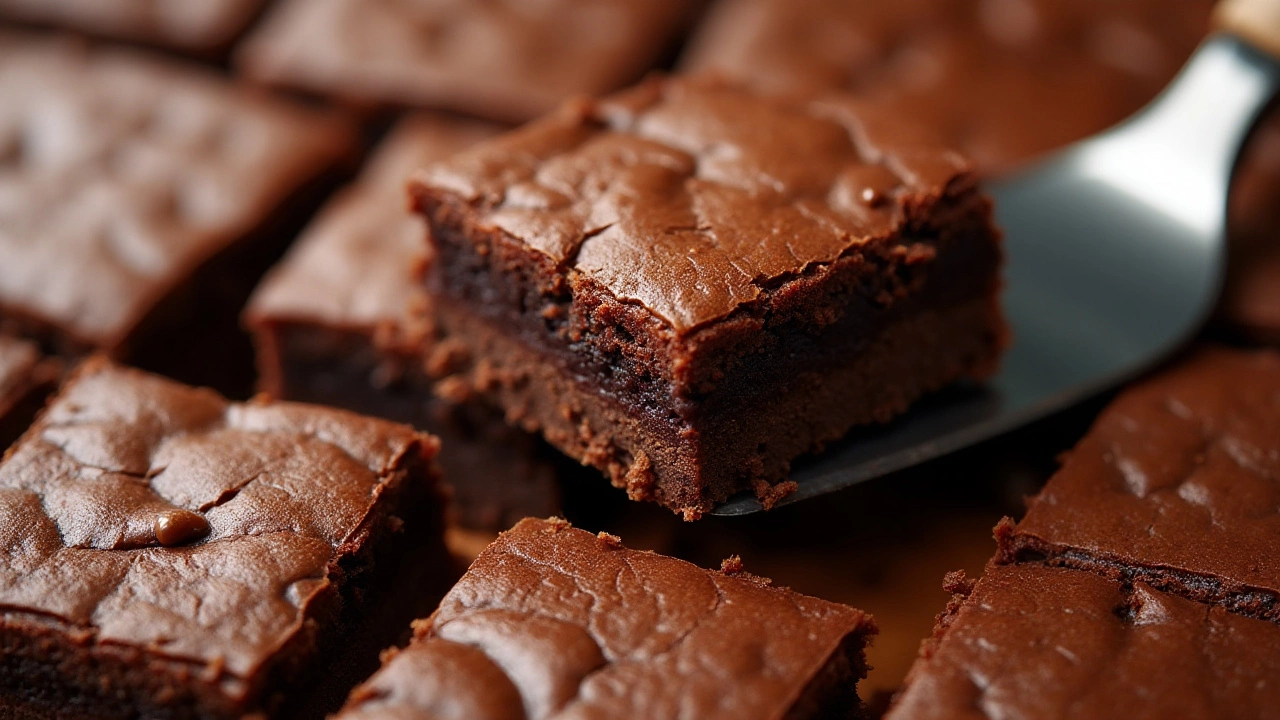
Using Your Senses
Baking is an experience that invites all the senses to participate, guiding you toward perfection even without tech gadgets at your disposal. The same applies when determining if your brownies are done using just your senses. Begin with your sight. Observe the edges of your brownies; they should start to pull away slightly from the pan, and the top layer should appear set and dry with a subtle sheen. This is a visual cue that your brownies might be nearing completion. You might notice small cracks forming on the surface, which is another telltale sign.
Hearing can also play a surprising role. Carefully listen to the brownies as they bake; a persistent crackling sound typically signals active baking. Once the noise starts to diminish or stops, your baking tips instincts should tell you that they are close to ready. Your sense of smell is indispensable in baking. A rich, chocolatey aroma should envelop your kitchen when the brownies are nearly done. If there's a hint of something burning, it's an immediate wake-up call to check on them.
Touch is equally important. While you may not use a toothpick, a gentle press on the center of the brownies with clean fingers or a spatula can give you an idea. The brownies should spring back slightly upon touch but still feel soft. Too much resistance implies overbaking, while underbaked ones might feel overly wet. Let the brownie doneness speak to you through these tactile cues, offering a hands-on way to perfect your routine.
"Trust your senses in the kitchen; they are as reliable as any manual, guiding you to the perfect bake," asserts baking expert Mary Berry in her acclaimed series on kitchen mastery.
Combining all these sensory signals, the art of baking becomes a richer, more immersive process. You begin to trust your intuition, becoming more attuned to your creations in their different stages. Whether it's catching that first whiff of chocolate or observing the gentle firming up of the crust, using your senses can transform even the simplest baking endeavor into a mindful culinary journey.
Thermometer Checks
For the meticulous baker striving for precision, using a thermometer to check the doneness of your brownies can be an invaluable method. While it might sound more suited to roasting a turkey or making candy, a food thermometer can offer you insights a toothpick or visual cues sometimes can't. Begin by considering a brownie mix to be similar to any custard-based dessert, where the proteins and sugars need to set to a specific temperature to achieve that soft, melt-in-your-mouth texture. Typically, the perfect temperature for brownies lies in the range of 180°F to 190°F. This might seem a narrow window, but maintaining this precision ensures your brownies won’t be too mushy or too dry.
To perform the thermometer check, insert the probe needle-like tip gently into the center of the pan. Avoid touching the bottom to prevent skewed results. Take your reading once you've inserted it about halfway through. This is critical because the edges are prone to overcooking and will register a higher temperature than the middle. A digital thermometer can provide a quick and accurate reading, so it's an ideal choice over the analog models, which take longer. One tip is to remember that the brownies will continue cooking even after removing from the oven due to residual heat, so erring slightly on the lower side, like around 180°F, can be to your advantage.
According to the pastry chef David Lebovitz, "The key to perfect brownies is understanding your own preferences. For fudgier ones, aim for the lower end of this temperature range. For cakier results, opt for the higher end." This advice provides flexibility depending on your desired outcome, allowing customization each time you bring out the baking pan.Brownies aren't meant to be an exact science. They're about treating yourself, so while the thermometer is a precise guide, let your personal taste guide your final decision. Whether your preference leans towards the chewy or a soft and melty consistency, mastering this nifty technique with a thermometer will help you create the brownies that dreams are made of.
| Brownie Texture | Temperature |
|---|---|
| Fudgy | 180°F - 185°F |
| Cakey | 185°F - 190°F |
Embracing the use of a thermometer can elevate your baking from guesswork to mastery. As your brownies cool post-oven, retaining that radiant heat, they transform subtly into their final form. Trust this process, along with your thermometer’s guidance, to unlock consistent results each time you treat yourself or your loved ones. Not to mention, the look on your guests’ faces when you serve them the impeccably baked dessert adds the final sweet note to this baking endeavor.
Master Baker Tips
Diving into the world of brownie perfection requires a blend of intuition, practice, and a sprinkle of creative flair. One invaluable tip is to always start by understanding the unique traits of your oven. Every oven has its nuances, and knowing yours inside out is crucial in ensuring that your brownies come out just the way you like them. For instance, some ovens might have hotspots which can cause uneven baking. In such cases, rotating the pan halfway through the baking time can do wonders to ensure a uniform bake across your brownie tray.
One seasoned baker's secret is to use a digital kitchen thermometer. The perfect internal temperature for a classic brownie falls between 180°F to 190°F. This not only ensures that the center is set but also maintains that rich, fudgy texture that makes brownies irresistible. Simply insert the thermometer into the center of the brownies for an accurate reading. It's a handy trick that removes all guesswork, providing a foolproof way to achieve the ideal balance of gooeyness and structure.
"Baking is both an art and a science, and knowing your ingredients well is akin to having the right palette. Mastery comes with patience and curiosity." - Julia M., Renowned Pastry ChefDeveloping a feel for the texture of your batter is another pro tip. An experienced baker knows that a shiny top and pulling away slightly from the edges of the pan signal that the brownies are nearing doneness. The batter's shiny sheen comes from the sugars melting and caramelizing, which promises an enticingly crispy exterior.
Timing is key in the brownie universe. The notorious trick—taking them out a smidge earlier than you might think—is a hallmark trait of gooey-centered brownies. Remember, they continue cooking as they cool, so be bold and embrace a bit of underbaking. To cultivate this intuitive timing, try setting a timer for about five minutes less than the recommended bake time and keenly observe the brownies’ behavior. Experience will fine-tune this judgment.
For those looking to spice up their baking tips repertoire, incorporating unique ingredients can elevate the traditional brownie. Consider mixing in a pinch of cayenne pepper or a handful of smoked sea salt for unexpected flavor depth. Not only do these ingredients complement the chocolate's richness, but they can also offer a surprising burst of delight to your taste buds.
Whether you're an aspiring baker or a seasoned expert, using these tips ensures each batch of brownies is a mouthwatering success. They foster an approach that's both methodical and experimental, allowing for creativity within the bounds of classic baking science.

